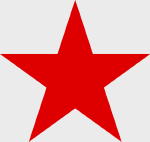AFV AFV015 Soviet T-34/85 Medium Tank - "White 314", 55th Armored Brigade, Germany, 1945 (1:43 Scale)
"By powerful artillery fire, air strikes, and a wave of attacking tanks, we're supposed to swiftly crush the enemy."
- Marshal Georgi K. Zhukov
 After the Battle of Kursk in the summer of 1943, panic began to spread in the ranks of Soviet tank units. They had met the German Panther for the first time on the field of battle, and the mighty Tiger I was being encountered in increasing numbers. The Soviets desperately needed a tank with a 'longer arm' so-to-speak, and the solution offered up by a crash development program was a T-34 with a larger turret and a larger gun. This new tank was known as the T-34/85, which featured an 85mm anti-tank gun (derived from an anti-aircraft gun of the same caliber) mounted in a larger three-man turret. This more powerful tank entered service from March 1944 onwards and it was an immediate "hit" since it could now stand toe-to-toe with the more powerful tanks being fielded by the Wehrmacht.
After the Battle of Kursk in the summer of 1943, panic began to spread in the ranks of Soviet tank units. They had met the German Panther for the first time on the field of battle, and the mighty Tiger I was being encountered in increasing numbers. The Soviets desperately needed a tank with a 'longer arm' so-to-speak, and the solution offered up by a crash development program was a T-34 with a larger turret and a larger gun. This new tank was known as the T-34/85, which featured an 85mm anti-tank gun (derived from an anti-aircraft gun of the same caliber) mounted in a larger three-man turret. This more powerful tank entered service from March 1944 onwards and it was an immediate "hit" since it could now stand toe-to-toe with the more powerful tanks being fielded by the Wehrmacht.
There were two main production families of the T-34, each with sub variants. The identification of T-34 variants can be complicated. Turret castings, superficial details, and equipment differed between factories; new features were added in the middle of production runs, or retrofitted to older tanks; damaged tanks were rebuilt, sometimes with the addition of newer-model equipment and even new turrets.
The Red Army never had a consistent policy for naming the T-34. Since at least the 1980s, however, many academic sources (notably, AFV expert Steven Zaloga) have used Soviet-style nomenclature: T-34 for the models armed with 76.2 mm guns, and T-34-85 for models armed with 85 mm guns, with minor models distinguished by year, as T-34 Model 1940. Some Russian historians use different names: they refer to the first T-34 as the T-34 Model 1939 instead of 1940, all T-34s with the original turret and F-34 gun as Model 1941 instead of Models 1941 and 1942, and the hexagonal-turret T-34 as Model 1942 instead of 1943.
German military intelligence in World War II referred to the two main production families as T-34/76 and T-34/85, with subvariants receiving letter designations such as T-34/76A - this nomenclature has been widely used in the West, especially in popular literature. When the German Wehrmacht used captured T-34s, it designated them Panzerkampfwagen T-34(r), where the "r" stood for russisch ("Russian"). The Finns referred to the T-34 as the Sotka after the common goldeneye, because the side silhouette of the tank resembled a swimming waterfowl. The T-34-85 was called pitkaputkinen Sotka ("long-barreled Sotka")
Pictured here is a 1:43 scale replica of a Soviet T-34/85 medium tank that was attached to the 55th Armored Brigade, then deployed to Germany during 1945. Now in stock!
Dimensions:
Length: 8-inches
Width: 3-inches
Release Date: August 2022
Historical Account: "On to Berlin" - On March 31st, 1942, orders were given for the reformation of the tank corps, as a result of the Soviet need for massed armored units so that the small tank brigades, which were now the basic armored formation, could be capable of decisive actions. The 1st, 2nd, 3rd, and 4th Tank Corps were to consist of a headquarters, two tank brigades, and a motor rifle brigade, authorized a total of 5,603 men with 20 KV heavy tanks, 40 T-34 medium tanks, and 40 T-60 or T-70 light tanks. The new tank corps lacked artillery, reconnaissance and engineer units, and rear support elements, although its component brigades included such formations. They were the equivalent of small Western armored divisions. The motor rifle brigade was a new unit type intended to retain captured positions and to neutralize enemy infantry and anti-tank weapons.
It was determined that this was too weak, and a third tank brigade was added to increase the offensive power. The final organisztion as published in 1944 included an additional heavy tank or heavy self-propelled gun regiment, plus a medium and a light self-propelled gun regiment.
A total of 31 tank corps were formed during the war, with 12 of them earning the designation of a Guards Tank Corps. Due to the destruction of the 21st Tank Corps at the Second Battle of Kharkov and the use of some tank corps to form mechanized corps, no more than 24 of them actually saw combat.


